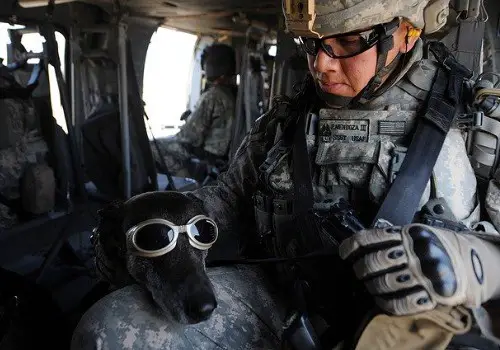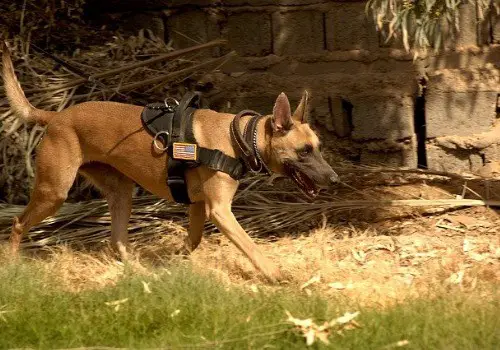How to get a service dog? Service dogs are dogs specifically trained to help people with disabilities who need assistance in their daily lives. Disabilities could include visual and/or hearing impairment, mental disorders, and diabetes. According to the American Disabilities Act, a service dog is any dog that is specifically trained to perform a task or tasks for a disabled person that are related to that person’s disability. To acquire a service dog, you can go through one of a variety of agencies, hire a trainer for a current animal, or train the dog yourself.
What You Should Know
There are a few things to know before you decide to get a service dog, such as which persons qualify for a service dog, the documentation necessary for getting a service dog, and what type of disability do you have for which a service dog is recommended.
To qualify for a service dog:
- You must be 12 years old
- You must have been diagnosed with a physical or mental disability, devastating chronic disease or illness, or neurological problem affecting at least one limb
- You must live in a stable home situation
- You must be physically and mentally capable of undergoing up to one hour of training per day
- You must be able to handle and command a service dog independently
- You must be able to handle the financial, physical, and emotional needs of a service dog
- You must own no other dog (cats, birds, and the like are allowed)

You’ll need a letter from your doctor before you apply for a service dog. The letter should be on the doctor’s letterhead and clearly outline the physical, mental, or emotional problem for which the doctor thinks a service dog would be beneficial. The letter should outline also the specific tasks the service dog will perform for its owner, such as reminding the owner to take medicines or guiding the owner as s/he walks. The letter will be signed and dated and can then be submitted with an application for a service dog.
The types of disability for which a service dog would be beneficial would, of course, be sensory problems such as blindness and deafness, but also included on the list would be emotional disabilities such as PTSD, war injuries and the anxiety following war. Physical disabilities cover everything from multiple sclerosis or MS to osteoporosis to scoliosis. Cancer, autism, epilepsy, and paralysis all qualify someone for using service dogs.
Just remember you must be able to feed, bathe, walk and exercise, and groom your service dog. You will have to research which airlines and buses allow service dogs to travel with you, as well as which public places like shopping malls and restaurants allow service dogs inside.
What Service Dogs Can Do
Service dogs are trained to perform or are born capable of a variety of tasks. Some diabetics, for example, have service dogs that smell their breath to alert them to crashing glucose levels. Other service dogs can recognize a seizure before it begins and warn their owners ahead of time so they can deal with the situation properly.
Some service dogs aid in mobility, steadying their masters and helping them get around. Others pick up objects or retrieve them for their mobility-impaired handlers. Some even pull the wheelchairs their handlers are riding in, thoroughly aiding in getting around.
PTSD service dogs might go into a space and return to signal their handlers that everything within the space is safe for the handlers to enter. Dogs that aid people with severe depression might be trained to remind their handlers to take vital medications. Service dogs might interrupt handlers who are attempting to self harm, lie across their handlers for the application of deep pressure to aid during panic attacks, and wake up handlers who are experiencing the throes of nightmares.
Others are extremely skilled in household tasks. Bringing a phone to the handler, fetching medications from spots that are designated, or doing likewise with a snack or beverage, are some behaviors service dogs can perform. Others include putting laundry into the washing machine, dryer, or a laundry basket, removing laundry from the same, and unloading groceries from grocery bags.
Agencies That Provide Service Dogs
There are a variety of agencies that provide service dogs, but the process of obtaining one is seldom simple and can be quite expensive. Some require a fee simply to interview about getting a service dog. Most insurance companies, at this point, do not cover the costs involved with obtaining a service dog.
The Process of Acquiring a Trained Service Dog
It is simple to qualify for a service dog; however, getting one is not as easy. To qualify, you simply need a written document from one of your healthcare providers stating that you are being treated for, and have, a disability or psychiatric or emotional disorder and require the assistance or support of an animal to aid in alleviating your health issue. The process of actually achieving the goal of getting a service dog can take months or years and a lot of financial investment.
Adopting or Buying a Dog to Train
If you are going to train your own service dog, or get a dog and then hire a trainer to achieve your goals in aiding your disability with a canine companion, choosing the right dog is vital. Personalities and temperaments vary wildly, and size matters according to the purpose of the service dog. A small dog that can fit in a harness on the chest near the handler’s face might be preferable for a diabetic alert dog, while a mobility assistance service dog must be large enough to help with balance or momentum.
The ideal service dog’s temperament is calm and focused on its handler. Overly friendly dogs that have scattered attention and no focus are ill-suited for the purpose, as are unfriendly dogs that act aggressively to people being too close to their handlers. A service dog should be keenly intelligent and devoted to a single person in order to fulfil its tasks without distraction or divided loyalties.
Hiring a Trainer

If going through an agency is too time-consuming and expensive for you, you can hire a trainer to help with your own dog’s capabilities and duties. Some trainers require the dog to be left with them for a period of weeks or months while they teach the dog specific tasks. Others will come to your home and work with you together to ensure you understand the process and the dog remains bonded solely to you as it learns its job.
Finding the right trainer is key to achieving your goal of having a specially trained service dog to assist you in whatever your disability may be. A trainer should be sufficiently experienced and have a success record of teaching dogs to do similar tasks.
Training Your Own Service Dog
If you are capable, and have some experience with dog training, you might train your own service dog. The American Disabilities Act does not require an official or certified trainer to perform this task. One place to start is preparing for the Canine Good Citizen test, which ensures a dog is capable of behaving itself well in public and can handle a variety of experiences with aloof calm.
One popular method of training is to use a clicker. Wait for, or guide, the dog to perform a certain behavior, and when the desired action is accomplished, click the clicker and give the dog a treat. This is popular not just for service dogs, but for various tricks and stunts that clever dogs are taught to perform. Eventually, the treats can be largely weaned away, and the dog recognizes the click as a sign of positivity and pleasure.
Some behaviors are far easier to teach service dogs than others. It is a much greater challenge to teach a dog to recognize seizure signs or a blood glucose drop than it is to teach a dog to pick up an object and place it in the handler’s grasp, lap, or reach. Turning lights off and on and opening and closing doors are fairly simple behaviors, but recognizing and reacting to psychological or emotional emergencies are far more complex to teach.
Keeping Your Service Dog Under Control
The American Disabilities Act does require service dogs to be under control at all times. Usually this means the dog is leashed, whether to a collar, harness, or headcollar. Some dogs must be free to perform their tasks, such as PTSD dogs exploring a space to signal it safe to its handler, but after the task is performed, the dog should return to being leashed.
A service dog may bark once if startled or provoked, but prolonged barking is considered a distraction and employees of the present locale may require the service dog to leave. A good indicator of someone passing their dog off as a service dog when it is actually just a pet is that their attention is not focused and they are erratic in behavior, excited by the environment and different people.
Places Not Required to Allow Service Dogs
Churches are one example of places that can deny access to service dogs. Others include sterile rooms such as operating rooms or emergency rooms, zoological exhibits that are open air, private clubs, private homes, and amusement park rides based on risk assessment.
Some Special Caveats About Service Dog Accessibility

Restaurants are required to permit service dogs entry. This includes access to buffet-style food arrangements and communal food preparation areas. However, restaurants are not required to permit the animal to sit on a chair or be fed at the table.
Hotels must allow service dogs to stay, but the handler must always be with the dog. Hotels need not accept service dogs left in the room alone.
Public pools are required to permit service dogs access to main areas where the public is allowed but not to permit the dog to swim with its handler. The dog must wait without disrupting until its handler is finished in the pool and returns to it.
Certifying or Registering a Service Dog
While some internet sites will offer to register or certify your dog as a service dog, these sites are not recognized by the Department of Justice or the American Disabilities Act. While being registered can help persuade some of the ignorant public that your service dog is legitimate, the fact of the matter is that no such process is necessary.
A service dog, by definition, is any dog trained to help its handler with their disability in one or more tasks. While the dog must be under control in public, and if it proves to be a nuisance, disruptance, or danger to staff and the public it can be required to leave the establishment it is in, there is no officially recognized process of establishing a canine as a service dog.
Obtaining a service dog is no easy feat, whether you are acquiring one from an agency or teaching one yourself, but a service dog can make a disabled handler’s quality of life vastly improved. A service dog is more than a loyal, faithful, intelligent companion. The dog is a means of interacting with the world and personal health in various ways. Getting a service dog is certainly worth the investment of time, effort, and money for many disabled persons looking to achieve a more complete and normal lifestyle.
